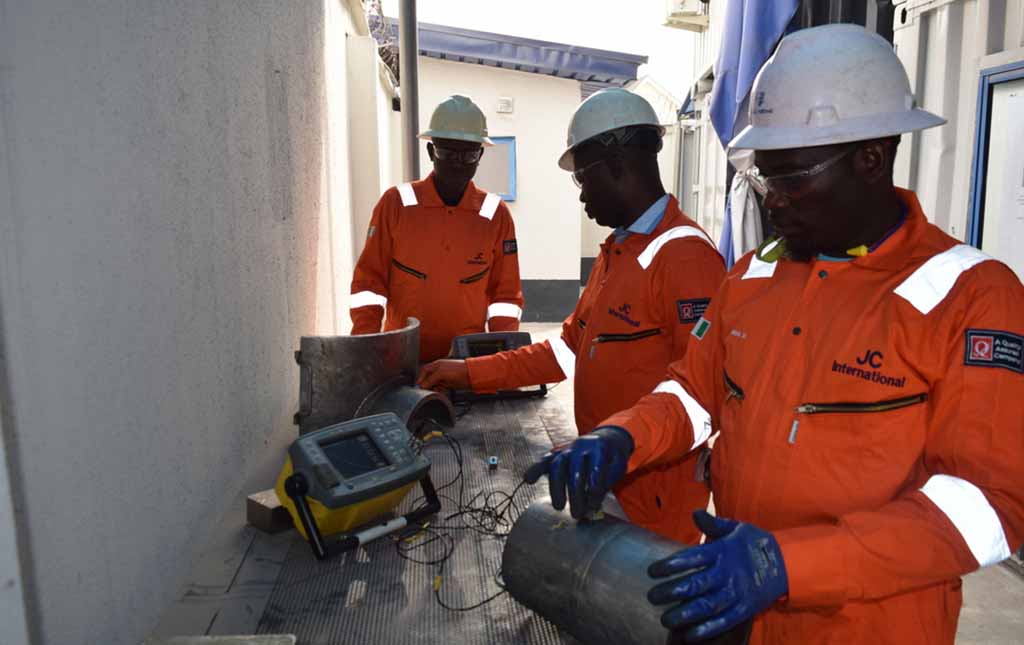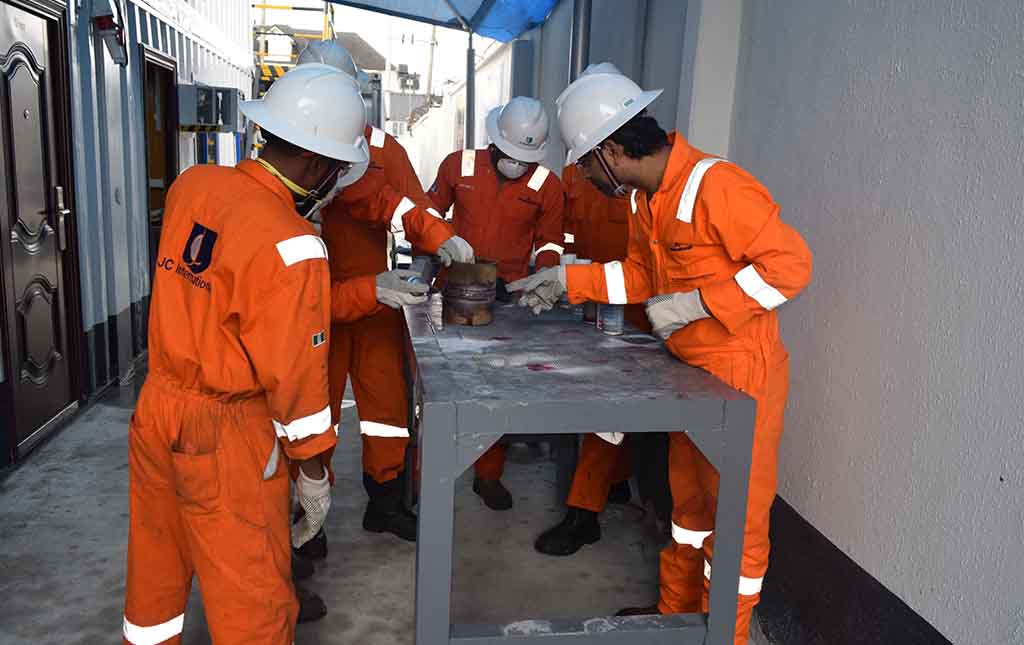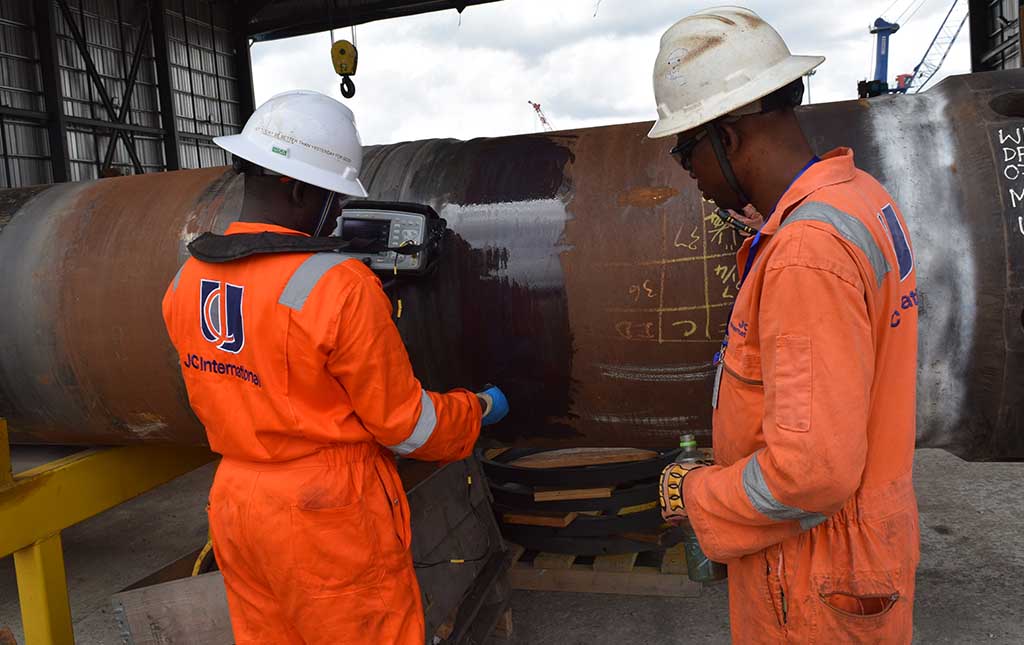
NDT Methods ANd Trainings You should know.
What is NDT?
NDT stands for Non-destructive testing. It refers to the skill and technique used to inspect, evaluate and test materials to determine product quality and integrity without causing damage. It is also used to detect defects or abnormalities. Non-destructive testing (NDT) is also known as non-destructive inspection or non-destructive examination.



6 Common Non-destructive Testing (NDT) METHODS
We develop candidates to be competent NDT technicians at different levels using various NDT methods. The following are the NDT methods and courses we offer in JC International training centre:
1. Dye penetrant examination:
Dye penetrant is one of the methods of non-destructive testing. It is also known as liquid penetrant or liquid dye penetrant. This method of NDT requires using dye or liquids to inspect objects with the aim of detecting defects or abnormalities.
Advantages:
1. Cost-effective: The dye penetrant method is cheap and does not require large equipment or chemicals to carry out testing.
2. Easy to Use: This method is easy to use by inspectors.
3. Flexibility: This method is highly flexible as it can be used on both ferrous and non-ferrous, magnetic and non-magnetic materials, etc.
4. The results of examinations are easily visible with this method.
5. It can be used for large surface areas.
Disadvantages:
1. Rigorous Preparation: This method requires cleaning the surface area before and after inspection. After inspection, cleaning must be carried out to take off the chemicals.
2. Limited Usage: This method cannot be used with all types of materials, especially porous objects, i.e., objects full of tiny holes or openings.
3. It requires multiple operations in a controlled environment.
4. Direct access to the material is required for this method.
2. Eddy Current Examination:
An eddy current test (ETC) is an electromagnetic test used to examine surfaces and tubes for flaws.
Advantages:
1. It can detect both surface and near surface flaws.
2. It provides immediate data, which is highly reliable.
Disadvantages:
1. It is not suitable for large areas.
2. Interpreting the data may be difficult.
3. Magnetic Particle Examination:
This method is also known as magnetic particle inspection (MPI). This is a non-destructive method of inspection that involves using magnetic fields to detect abnormalities in an object.
Advantages:
1. Highly Sensitive: Effective for detecting surface and slight subsurface defects.
2. Cost-effective: It is relatively inexpensive compared to other non-destructive testing methods.
3. Immediate indications of defects are visible.
4. It can be used in field conditions with portable equipment.
5. It requires minimal training and is easy to use.
Disadvantages:
1. Limited to Ferromagnetic Materials: Only applicable to materials like iron, nickel, and cobalt.
2. It cannot detect deep subsurface defects.
3. Part of the examined object must be magnetized, which may not be feasible for large components.
4. Ultrasonic Testing:
The ultrasonic testing is a method of NDT testing that involves using ultrasonic waves to examine objects for defects.
Advantages:
1. Deep Penetration: This method can detect internal and surface defects deep within the material.
2. Versatility: It is suitable for a wide range of materials, including metals, plastics, and composites.
3. It is safe and non-hazardous because no radiation is involved.
4. Immediate feedback and evaluation.
Disadvantages:
1. It requires highly trained and skilled operators.
2. The interpretation of results can be complicated.
3. It requires a smooth surface and good contact for accurate results.
4. The cost of equipment and maintenance is high.
5. Radiographic Film Interpretation Examination:
This method of NDT involves examining and recording the amount of radiation an object has absorbed. It analyzes radiographic images and films.
Advantages:
1. It creates a permanent visual record of the inspection.
2. It can detect very small defects.
Disadvantages:
1. It involves exposure to X-rays or gamma rays, posing health risks.
2. High Cost: Expensive equipment and consumables (films, chemicals).
3. Time-Consuming: Requires time for exposure, film development, and interpretation.
4. Safety Precautions: It requires strict safety protocols and controlled environments.
5. It requires highly trained personnel.
6.Visual Examination:
This is the basic and oldest form of NDT. It involves using the naked eye to examine objects for flaws and abnormalities. Certain instruments, like the mirror, borescopes, and magnifying glass can be used during examination.
Advantages:
1. It is the easiest and quickest method of inspection.
2. Cost-effective: The cost is low; minimal equipment is required.
3. It provides instant feedback.
4. It can be used on almost any material and surface condition.
Disadvantages:
1. Only surface defects are detectable; there is no internal defect detection.
2. Highly Subjective: Results can vary depending on the inspector’s experience and judgment.
3. Light Dependency: Requires good lighting conditions for accurate inspection.
4. Limited Accuracy: Less precise compared to other non-destructive testing methods.
Upon completion of our training on any of the NDT courses (methods), participants are issued a certificate. The American Society of Non-Destructive Testing (ASNT), a globally recognized authority in the field, accredits our NDT (Non-Destructive Testing) certificate. This accreditation signifies a high standard of quality and professionalism, recognized and respected by employers and industry leaders worldwide.
JC International is a professional member of the ASNT and conducts NDT training in Port Harcourt, Lagos, and Uganda. Contact us today to enroll in any of our NDT courses.

Wakume keneth
How much are these certificates